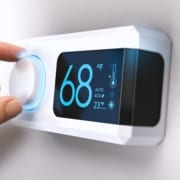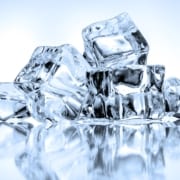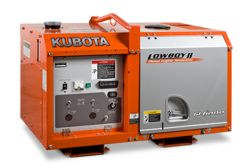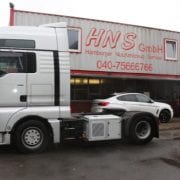Based in Sydney Australia, RFL Alternators Pty Ltd is a world class manufacturer of high quality permanent magnet alternators for the power generation industry. With over 25 years of investment into research and development, RFL prides itself in continuing to develop new and efficient cutting-edge technologies and products which are at industry’s forefront, and manufactures alternators to the highest of quality standards.
The objective of the blog is to give a deep understanding of Permanent Magnets, the modern industrial applications, demand and supply drivers.
Why know about Permanent Magnets
Permanent magnets are a vital part of modern life. They are found in or used to produce almost every modern convenience today, from speakers in mobile phones to the electric motors in hybrid cars; air conditioners and washing machines. Permanent magnets are used increasingly in technological applications, including traveling wave tubes, Hall Effect sensors, high temperature-resistant permanent magnets, thin-film coating equipment and flywheel storage systems.
Magnets – Permanent vs Temporary
Centuries ago, it was discovered that certain types of mineral rock possessed unusual properties of attraction to the metal iron. One particular mineral, called lodestone, or magnetite, is found mentioned in very old historical records (about 2500 years ago in Europe, and much earlier in the Far East) as a subject of curiosity. Later, it was employed in the aid of navigation, as it was found that a piece of this unusual rock would tend to orient itself in a north-south direction if left free to rotate (suspended on a string or on a float in water). A scientific study undertaken revealed that steel could be similarly “charged” with this unusual property after being rubbed against one of the “poles” of a piece of lodestone or temporary magnets.
Unlike electric charges (such as those observed when amber is rubbed against cloth), magnetic objects possessed two poles of opposite effect, denoted “north” and “south” after their self-orientation to the earth. It was impossible to isolate one of these poles by itself by cutting a piece of lodestone in half: each resulting piece possessed its own pair of poles.
Induction – Permanent Magnets Vs Electromagnets
A Permanent Magnet is made from a hard-magnetic material whose atoms have been permanently aligned during manufacturing. Permanent Magnets maintain this intrinsic magnetism over long periods of time.
An electromagnet is created by running a current through conductive wire that is tightly wound around a piece of soft magnetic material. The magnetic field stops when the electrical current ceases.
The basic operation of generators and motors relies on Faradays law of induction which predicts how a magnetic field will interact with an electric circuit to produce an electromotive force (EMF). A magnetic field is thus required to create electrical power in generator mode, or to create work in motor mode. These magnetic fields can be generated by either permanent magnets (PMs) or electromagnets. This blog will give a brief description on the differences between the two along with their associated advantages and disadvantages.
Magnetic Strength
The main benefit to using an electromagnetic is in the ability to control the resultant magnetic flux. This can be done by either turning the magnet on and off or by adjusting the current through the coil. This is an ideal characteristic for maintaining voltage regulation where the electromagnet operates as a generator. Electromagnets also possess the ability to create greater pull strength than permanent magnets.
As the name suggests Permanent Magnets maintain a permanent magnetic flux, hence limiting the flexibility associated with voltage control whilst operating as a generator. A key benefit of PMs is that they are capable of operating at a peak efficiency at all times.
Loss of Magnetism – A myth or fact!
Deep Dive into ways Permanent Magnets are mounted in Alternators and Motors – Understanding limitations of Surface mount PMs and how our patented Imbedded design has proven success
It is a common notion that permanent magnets lose their magnetism over a period of time. Although this is not at all true, there are conditions which may result in loss of magnetic properties.
For this we need to understand the difference between Surface Mount Magnets and RFL’s patented Imbedded Design and the relation of magnetism to PM temperature rating
We conducted a lot of temperature tests on the RFL alternators and other alternators / motors using surface mounted design. The case temperature and the rotor temperature stabilize after about 1 Hour running at full load. The PM temperature range is about 120 degC and although our alternators are air-cooled, we have never registered temperatures beyond 100 degC.
However, this may not be the case with alternator design where the Permanent Magnets are surface mounted. At this temperature, the magnets can be susceptible to short circuit load conditions damaging the magnets. We have tested many other pm designs and have found these units to be prone to magnet damage under short circuit load conditions.
High loads or motor starting can demagnetize the magnets in surface mount pm designs even at magnet temperatures well below the PM temperature rating. For example – DOL motor starting of AC motors. This is effectively a short circuit and as such many PM designs have problems starting AC motors. The RFL design does not have these problems. The motor starting ability is equivalent to a standard induction alternator with a pm exciter. The patented positioning in the RFL Alternators means that magnets are protected from flux loss under short circuit loads, even at elevated temperatures. This is a key advantage of RFL design.
We have also tested the RFL design with magnet temperatures close to 100 degC, at short circuit conditions many times and no flux loss has been registered. Due to the patented imbedded design, The RFL unit does not have this problem. In fact, we have had zero rotor failures to date.
Our largest four pole customers are reefer industry generator set manufacturers. We have produced over 2000 units for these clients. This application requires constant starting of refrigeration compressors at high temperatures and for long periods of constant operation (weeks without stopping). RFL Permanent Magnet Alternators have had not a single failure in this application.
Size
There are a number of major families of permanent magnets available for designers, ranging from ferrite, known for its low cost and low energy, to rare earth materials, which are more expensive and offer higher performance. Designers need to analyse magnetising field strength and magnetic output of magnetic materials prior to deciding on the appropriate magnet.
The design of Permanent Magnets is extremely flexible; they can be built longer and flatter, providing a large area of magnetic coverage. Due to the flexibility in Permanent Magnet sizing, the generators construction becomes more flexible. For example, a higher pole count can be achieved due to Permanent Magnets requiring a smaller
http://premier-pharmacy.com
pole pitch. This will increase the electrical frequency. The availability of Permanent Magnets in very small dimensions make them ideal for size-limited applications, or for a lightweight man portable application.
In the case of electromagnets size prohibits applications. Cooling requirements further limits the portability of electromagnetic machines.
Efficiency
Electromagnets require a DC power source in order to create the magnetic field, subsequently producing heat that requires removal. The main advantage of Permanent Magnets over electromagnets is that the Permanent Magnet does not require a continuous supply of electrical energy to maintain its magnetic field and consequently generates no heat. This makes the Permanent Magnet the clear winner in this field.
Load balancing
With electromagnetic generation, a high source impedance exists. When operating at a full single phase load the input impedance (that of the electromagnet) becomes measurable with that of the phase impedance; this will naturally cause a high voltage variation. Eventually this could burn out both the rotor and stator winding. Suppliers tend to use an Automatic Voltage Regulator (AVR) to overcome this, adding cost and complexity to the design. With the use of PM machines, a load on one phase does not cause adverse effects on the other 2 phases.
Typical Applications of a Permanent Magnet
Scientists use four basic ways to categorize magnets, based on how their magnetic force is used.
Category 1: The magnet’s attraction or repelling force.
These applications are the simplest use of magnets. A simple refrigerator magnet is a perfect example—a picture or slogan on a small piece of laminated cardboard with a small bar magnet glued to the back which attracts to a metal refrigerator door.
Category 2: The magnet’s ability to convert electric force into mechanical force.
Electric motors are good examples of using magnets to convert electric energy into mechanical force. While electromagnets are more commonly used for electric motors, permanent magnets can be used as well. A magnet is placed in a conductive substance, and then the magnetic field yielded by the magnet turns another piece of equipment, which rotates the motor rapidly.
Category 3: The magnet’s ability to convert mechanical force into electric force.
Generators predominately use this ability. In contemporary times, electromagnets are more often used for power generating turbines, but permanent magnets still play a part. Very simply, two permanent magnets are placed opposite one another, with like sides facing. Their repelling forces rotate a turbine, which then turns a piece of equipment known as an armature. This churning armature generates electricity, which can then be transferred to other purposes.
Category 4: The magnet’s ability to affect ion beams.
Cathode-ray tubes, a type of vacuum tube for focusing electrons, use permanent magnets for aiming purposes. A ring of permanent magnets, alternating north and south poles, is on the end of an electron gun’s yoke, and these ringed magnets can be rotated to focus the beam for better reception or tighter focus.
In all of these applications, it is important for the designed permanent magnet to be of high strength, resistive to corrosion, and resistive to demagnetization due to excessive heat. Manufacturers have gained experience in designing and producing permanent magnets to meet these needs for industries with permanent magnet and magnetic assembly applications.
Economics of Permanent Magnets – Demand vs Supply
Permanent magnets today are 60 times as strong as they were about 90 years ago. Strong permanent magnets that can be used in industrial applications were developed in the 20th century, and Japanese and western European researchers and technologies have always played major roles in the development of permanent magnets.
Neodymium magnets are the strongest known Permanent Magnet and as such are generally used in Permanent Magnet electrical machines. Neodymium is classified as a rare earth magnet however, they are not exceptionally scarce. The bulk of the current production is from China, whose government imposed strategic materials controls raising concerns in consuming countries, this has caused a high price tag. The price has dropped since the 2011 boom however the cost of electrical machines containing PM material still comes at a higher cost. It should be noted that due to the higher efficiency of PM machines, there will be a cost savings factor in fuel.
The NdFeB Permanent Magnet market will continue to grow
Metric Tons x 1,000
| Production by region / country |
2012 |
2016 |
| China |
50 |
65 |
| Europe |
1 |
1 |
| Japan |
10 |
8 |
| USA |
0 |
2 |
| All Others |
2 |
2 |
| Total |
63 |
78 |
Source: “Permanent Magnets 2010-2020”
The permanent magnet industry will start to see the end of serious RE shortages as new supplies begin to hit the market in coming years, with new designs and new materials thus bringing down the cost of Permanent Magnets and their related application and products while still maintaining all of the technical superiority vs conventional products
Reliability
Electromagnets are vulnerable to power failures, too much current can create short circuits rendering the magnet useless. AVRs also add another component in the system which decreases the overall system reliability as a result.
Permanent Magnets face limitations in operating temperatures due to limitations in material properties, consequently they may require special cooling in very hot environments. PMs provide a constant magnetic strength utilising simple designs with no moving parts or electronics. Unlike the electromagnets PM machines are not susceptible to power failures and operate virtually maintenance free.
Summary
The permanent magnet industry has grown in the last decade and is likely to continue this growth into the next decade because of increased usage of magnetic circuit components in a variety of industrial equipment and devices. Electromechanical devices (motors and permanent magnet alternators) constitute the largest market for permanent magnet materials. This market is growing rapidly.
Applications related to permanent magnet direct current motors – brushless direct current (BLDC) and brush-type (PMDC) – and power generation (permanent magnet alternators) will be the largest usage segment of neodymium-iron-boron (NdFeB) permanent magnets, followed by voice coil motors (VCMs) in disk drives, because of the need for reduced size and higher performance. The third major usage segment is hybrid and electric automotive drives.
Some key facts
- The global market for permanent magnets has reached US$11.3 billion in 2013, and is expected to grow to US$ 15 billion by 2018 with a CAGR of 5.7%
- Metallic magnets (combining neodymium-iron-boron, alnico, and samarium-cobalt magnets) dominate the market, followed by ceramic magnets (ferrites) magnets.
- In terms of regional demand, the market is large in the Asia-Pacific region, and it is growing at a fast pace due to rising demand from end-user industries, especially in countries such as China and Japan.
- The market is growing slowly in Europe, but will continue to grow at a significant rate in the North America.
- The U.S. is a net importer of permanent magnets, for as much as 60% of its consumption.
This blog is intended to share a high-level view on permanent magnets. If you want to know anything more, please let us know.





 The Portable 23kw 480V Generator is the newest addition to Makinex’s portable generator range. The generator’s unique alternator
The Portable 23kw 480V Generator is the newest addition to Makinex’s portable generator range. The generator’s unique alternator
 Based in Sydney Australia, RFL Alternators Pty Ltd is a world class manufacturer of high quality permanent magnet alternators for the power generation industry. With over 25 years of investment into research and development, RFL prides itself in continuing to develop new and efficient cutting-edge technologies and products which are at industry’s forefront, and manufactures alternators to the highest of quality standards.
Based in Sydney Australia, RFL Alternators Pty Ltd is a world class manufacturer of high quality permanent magnet alternators for the power generation industry. With over 25 years of investment into research and development, RFL prides itself in continuing to develop new and efficient cutting-edge technologies and products which are at industry’s forefront, and manufactures alternators to the highest of quality standards.














